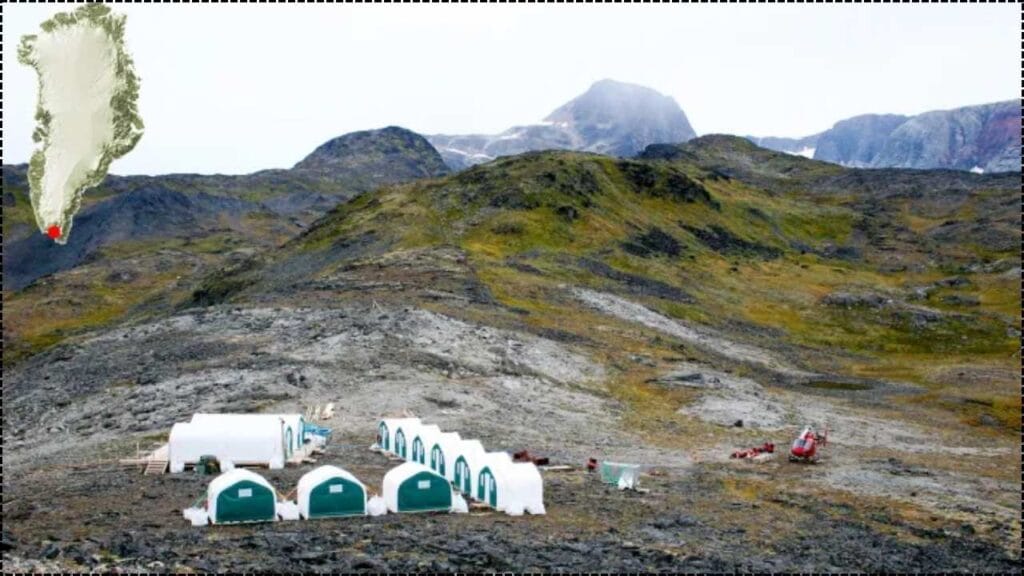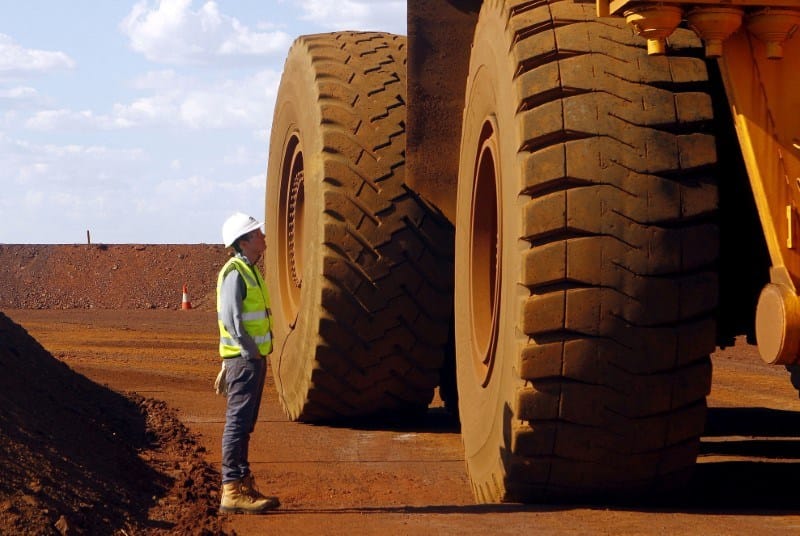Greenland, with its vast mineral treasures, is gently resisting global pressures to become a mining hub, sparking a heartfelt international conversation. In a world racing for clean energy, digital advancements, and secure defenses, minerals like rare earth elements, uranium, molybdenum, and lithium shine as precious as gold. While governments and tech leaders seek new resources, Greenland stands with quiet strength, choosing care for its icy lands and people over haste. This courageous choice invites us all to reflect on balancing progress with the preservation of our planet’s beauty and the well-being of its communities.

Greenlanders—mostly Inuit—see something different than foreign investors. They see home. They see fragile ecosystems, traditions passed down for generations, and waters that still feed entire communities. At a time when the world views Greenland as the next mining frontier, Greenlanders are choosing sustainability, sovereignty, and cultural survival over profits. The decision is turning heads—and challenging assumptions.
Greenland Resists Global Pressure to Become a Mining Power
| Topic | Details |
|---|---|
| Main Conflict | Greenland’s refusal to embrace large-scale mining despite immense global interest |
| Natural Resources | Rare earths, uranium, molybdenum, gold, lithium, anorthosite |
| Current Policy | Community-driven, anti-uranium stance, strict environmental review |
| Economic Factors | Dependence on Denmark subsidies, few active mines |
| Source | Greenland Resources, Reuters, NOAA, UN Indigenous Reports |
Greenland is gently teaching the world that saying “no” can be a profound act of compassionate leadership. Facing mounting pressure from global mining interests, Greenlanders have chosen with heartfelt conviction to prioritize their values over haste. With quiet strength, they protect their icy homeland and its people, inspiring us all to cherish what matters most—community, nature, and a sustainable future—over fleeting gains.
They’re betting on local wisdom, community-led policy, and environmental integrity. Whether it’s tourism, clean energy, or fisheries, Greenland’s road to prosperity is rooted in long-term thinking. This isn’t just about minerals—it’s about self-determination. And in that story, Greenland is proving to be a model for the rest of the planet.

What’s the Big Deal About Greenland’s Minerals?
Greenland may look like an icy wilderness, but what lies beneath is a geopolitical gold mine. As the ice recedes due to climate change, access to previously unreachable deposits is becoming a reality. Scientific surveys reveal vast reserves of:
- Rare earth elements: essential in smartphones, EVs, wind turbines, and defense systems
- Uranium: used in nuclear reactors and weaponry
- Molybdenum: a metal critical to aerospace, high-strength steel, and electronics
- Gold, lithium, and other strategic materials
These aren’t just economic resources—they’re lifelines for the global shift to renewable energy and green tech. The irony? The warming that makes mining feasible is the result of the very systems Greenland’s minerals would support.
Global Interest is Peaking
Major powers like the United States, European Union, and China are pushing to reduce reliance on Chinese-dominated rare earth markets. Greenland has become a hot commodity.
- In 2025, the government granted a 30-year license to EU-backed Greenland Resources for a molybdenum project expected to cover 25% of European demand.
- The U.S. is exploring strategic financing and tech-sharing to boost access.
- China, once active in Greenland, is now mostly sidelined due to community and political resistance.
But even with foreign pressure and tempting financial offers, Greenland remains cautious.
Why Greenland Says “Hold Up” to the Mining Rush
1. Indigenous Leadership and Deep Cultural Roots
About 90% of Greenland’s population is Inuit, and that matters. Indigenous practices like fishing, hunting, and land stewardship are not just traditions—they’re livelihoods and values. For many Greenlanders, land isn’t a resource to be exploited. It’s sacred.
In 2021, the Inuit Ataqatigiit party swept into office with a promise to halt uranium mining and put people over profits. The landslide win sent a message: Greenland’s future must be decided by Greenlanders—not corporations or global interests.
2. Environmental Risk is Real
The Arctic is one of the most vulnerable ecosystems on Earth. Even small disruptions can have long-lasting effects:
- Melting permafrost releases methane
- Habitat loss for polar bears and seabirds
- Waterways contaminated by heavy metals or tailings from mining
One high-profile example? The Kvanefjeld project, rich in rare earths and uranium. Locals in nearby Narsaq feared the uranium could leach into rivers, impact fisheries, and hurt tourism. The government responded with a full ban on uranium exploration, halting the project indefinitely.
Greenland’s Economic Reality and Independence Aspirations
Here’s the financial twist: Greenland still receives about $500 million USD annually in subsidies from Denmark. That’s nearly half of its national budget.
So why is Greenland turning down mining dollars? Because it’s playing the long game. Leaders are betting that economic independence without sacrificing heritage is possible. That means investing in:
- Hydropower: Greenland has abundant rivers, and clean energy could eventually be exported
- Sustainable tourism: Northern lights, glaciers, and wildlife draw eco-conscious visitors
- Fishing exports: Halibut, cod, and shrimp remain pillars of the economy
- Education and local business training: so Greenlanders—not just outsiders—can run future industries
A Slow but Strategic Approach
Right now, only two mines are active:
- A gold mine near Nuuk
- An anorthosite mine, whose material is used in fiberglass and paints
Greenland is proving that slow development, with full local control, can be smarter than a gold rush.
Foreign Powers Push Forward — Carefully
The interest isn’t slowing down.
- The EU sees Greenland as part of a long-term solution to material shortages
- The U.S. is actively exploring partnerships and loan guarantees
- Private firms from Canada, Australia, and Europe are offering contracts with promises of low-impact technology
But under Greenland’s rules, no project moves forward without environmental reviews, community consultations, and full transparency. The Inuit-led government is unwilling to trade sovereignty for short-term gain.
Greenland’s Environmental Code
Greenland’s mineral laws require:
- Environmental impact assessments (EIAs) by independent scientists
- Social impact reports with input from nearby communities
- Regular audits during project lifespan
And if locals say no? The project gets shelved.
Related Links
U.S. to Start ‘Aggressive’ Visa Revocations for Chinese Students — Rubio Sparks Global Alarm
Crypto Blowback: Labor Department Kills Biden’s 401(k) Crypto Guidance in Stunning Move
Newark Airport’s Air Traffic Control Issues Highlight National Infrastructure Challenges
Lessons the World Can Learn from Greenland
1. Prioritize People Over Projects
Too often, mining operations move forward with minimal input from locals—especially Indigenous peoples. Greenland flips that model. Here, community consent comes first.
2. Environment is a Shared Asset
Rather than viewing the environment as collateral damage, Greenland’s policies treat nature as a stakeholder. Fishing, tourism, and outdoor livelihoods depend on clean water and air.
3. Build Diverse Economies
Greenland’s approach shows how non-extractive sectors—like renewable energy and cultural tourism—can power long-term economic goals without heavy environmental costs.
4. Indigenous Governance Works
The success of the Inuit Ataqatigiit-led government is a powerful case study in Indigenous-led governance creating resilient, forward-looking policy.
FAQs
Q: Why is Greenland resisting mining when it needs money?
A: Because leaders and citizens believe the cost to the environment, health, and culture is too high. They’re choosing sustainable growth over risky extraction.
Q: Is Greenland anti-mining?
A: Not entirely. Select projects like molybdenum extraction are allowed—but only under strict guidelines and full public oversight.
Q: What’s the deal with Kvanefjeld?
A: That massive rare earth–uranium site was frozen after Greenland passed a uranium mining ban. Local resistance played a big role.
Q: Can Greenland become independent?
A: Possibly. If it continues diversifying its economy and investing in infrastructure, it could gradually reduce Danish financial dependency.
Q: Who supports Greenland’s stance?
A: Groups like the UN Permanent Forum on Indigenous Issues, WWF, and Nordic Council have praised its environmental and cultural safeguards.








